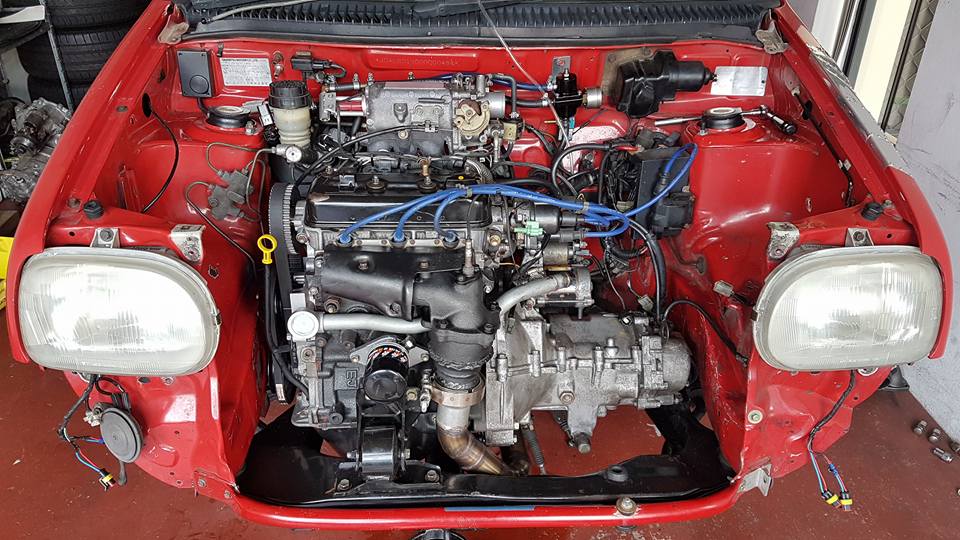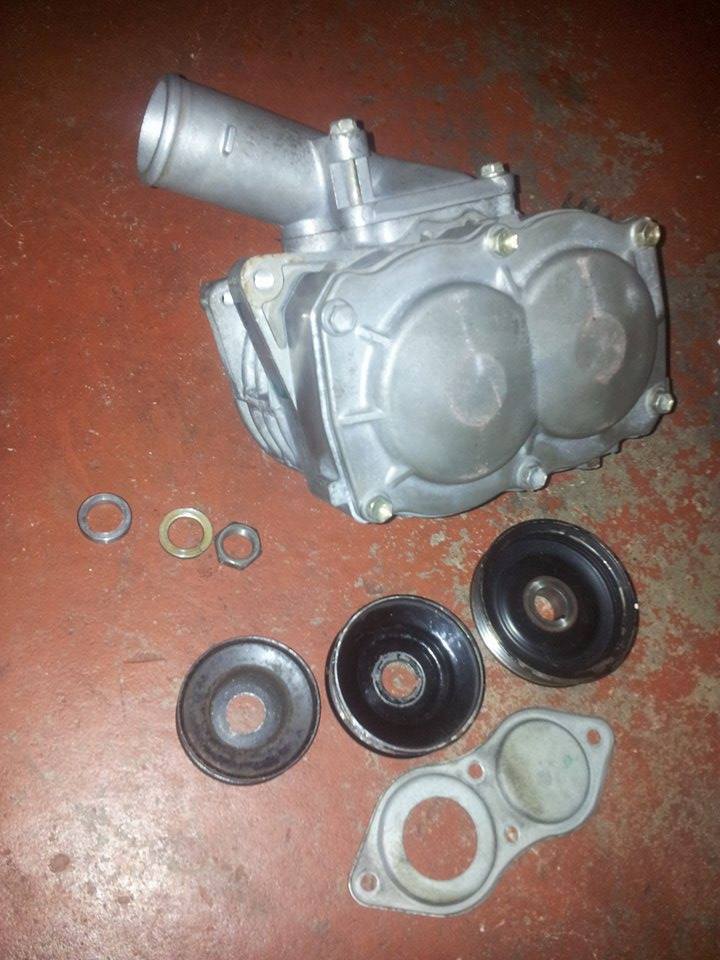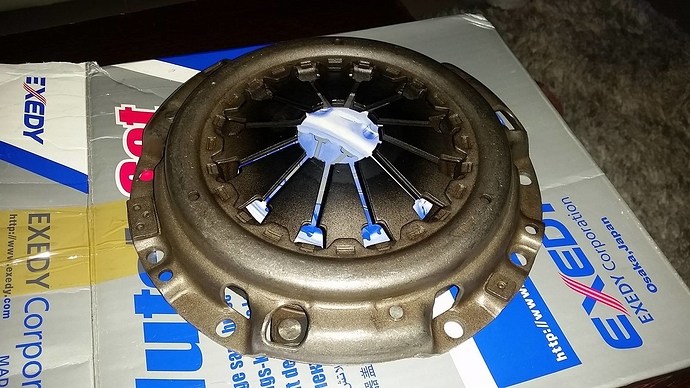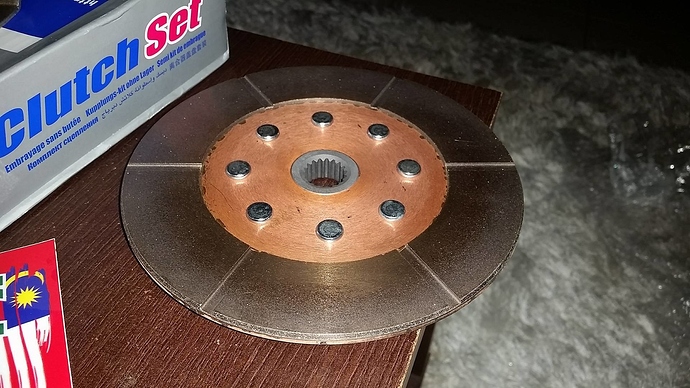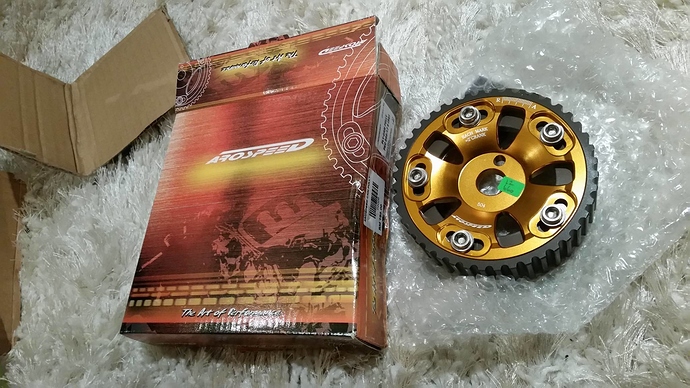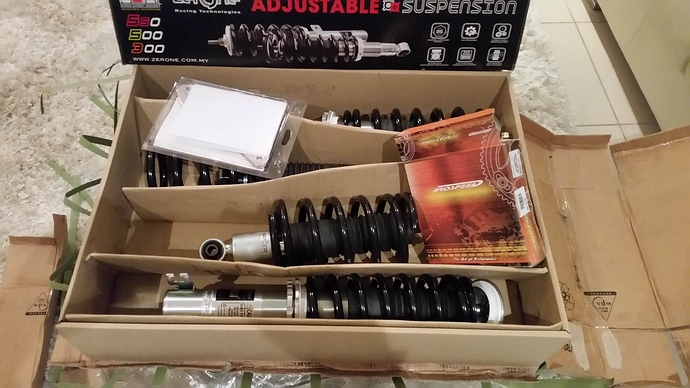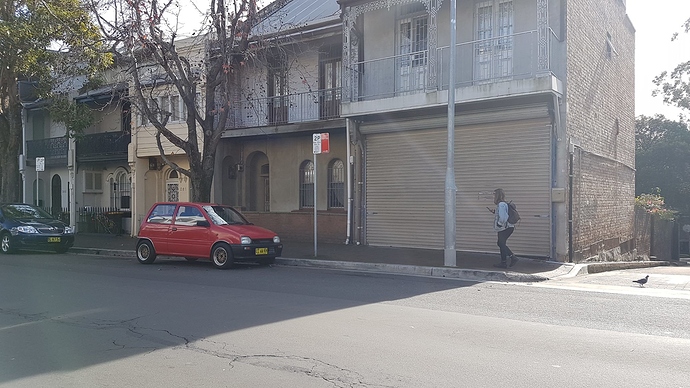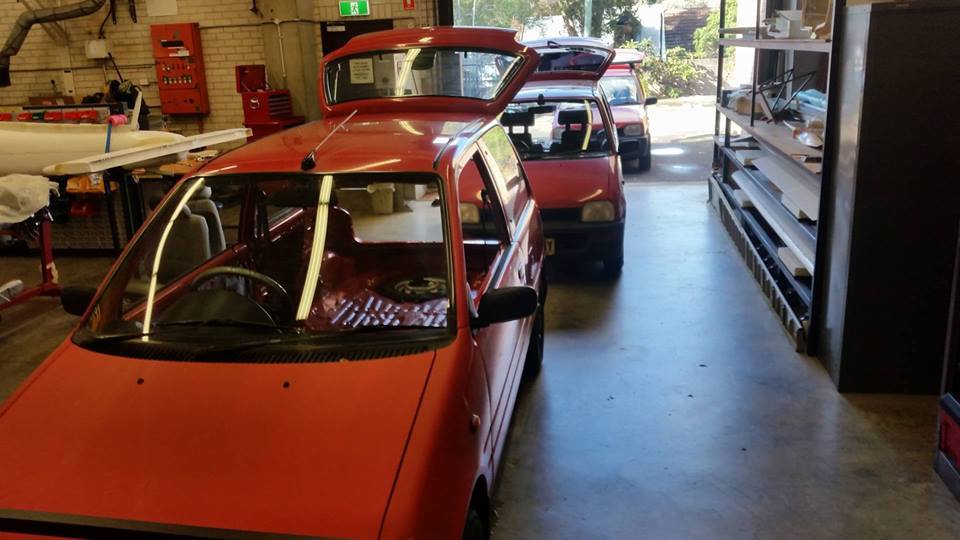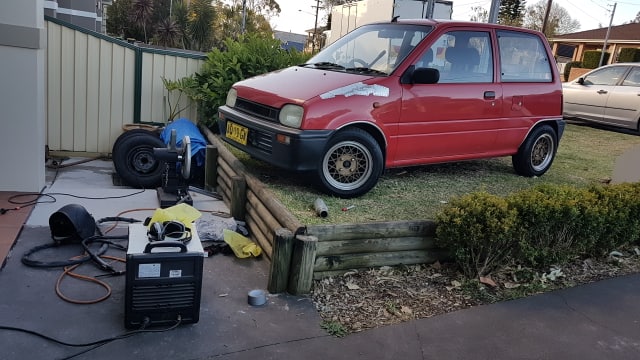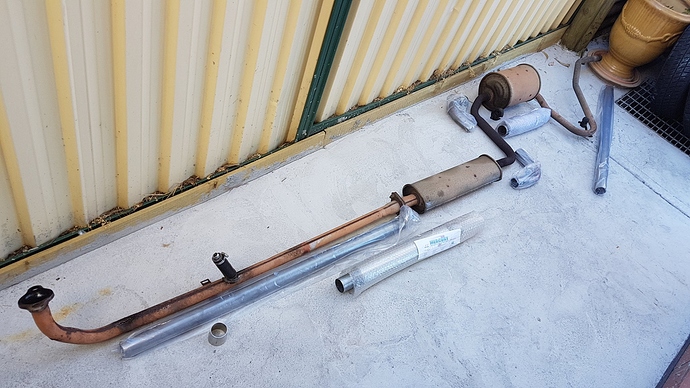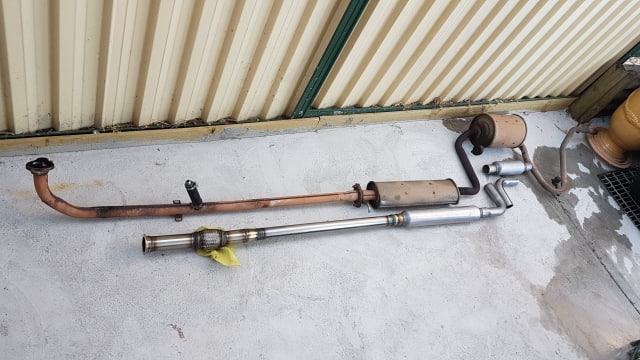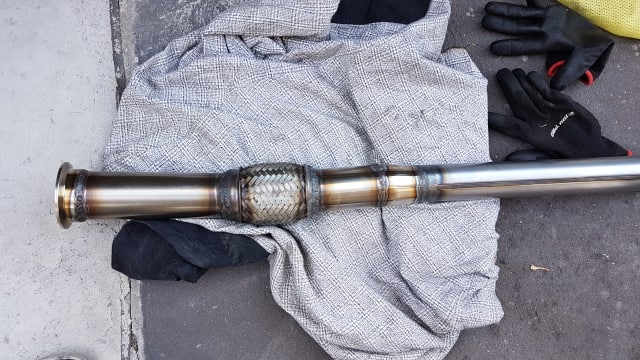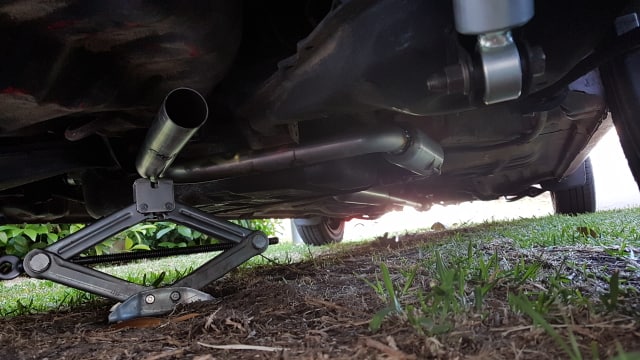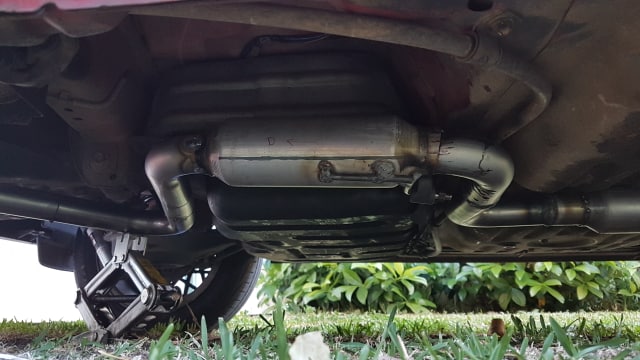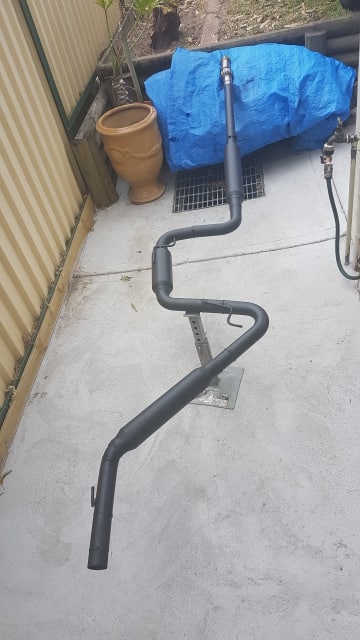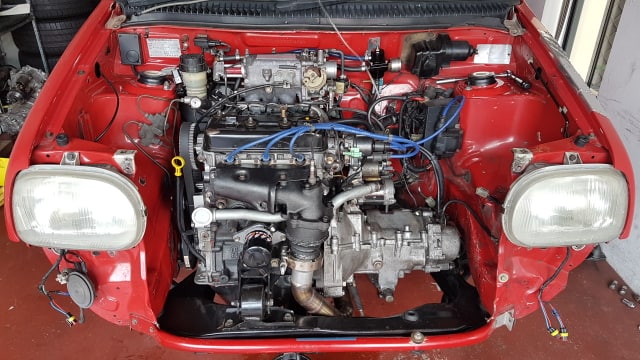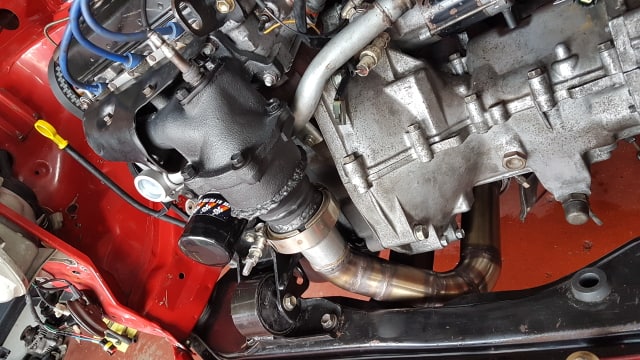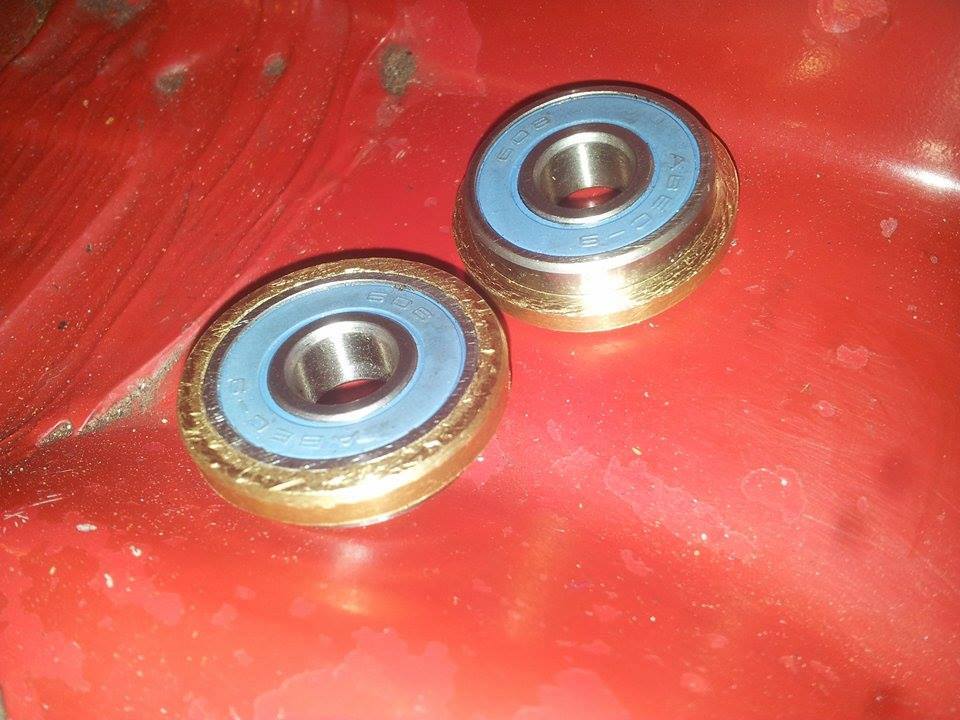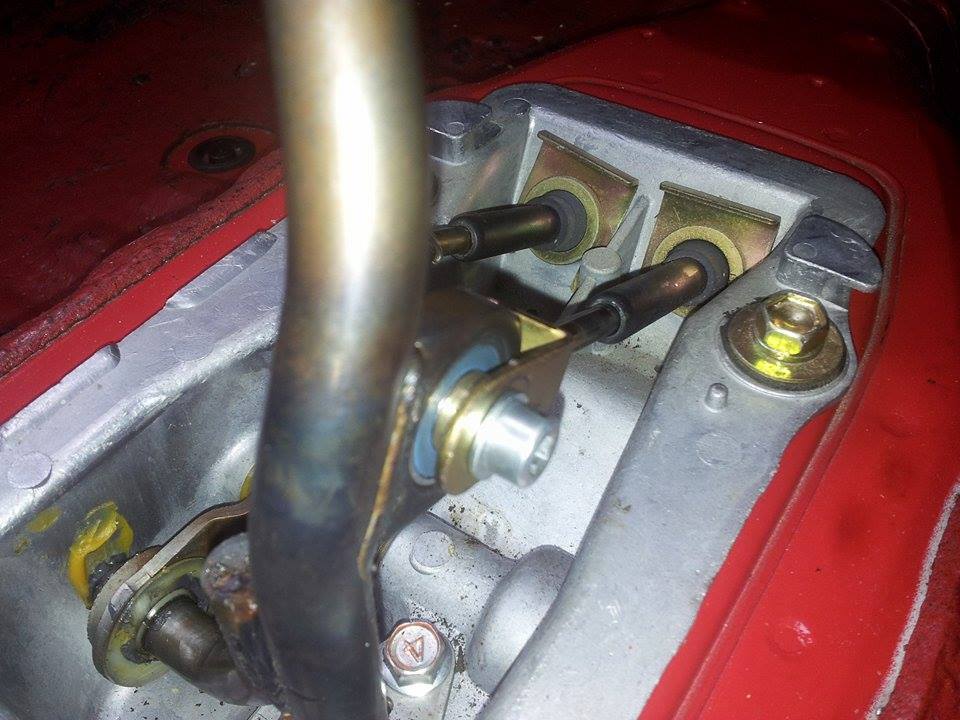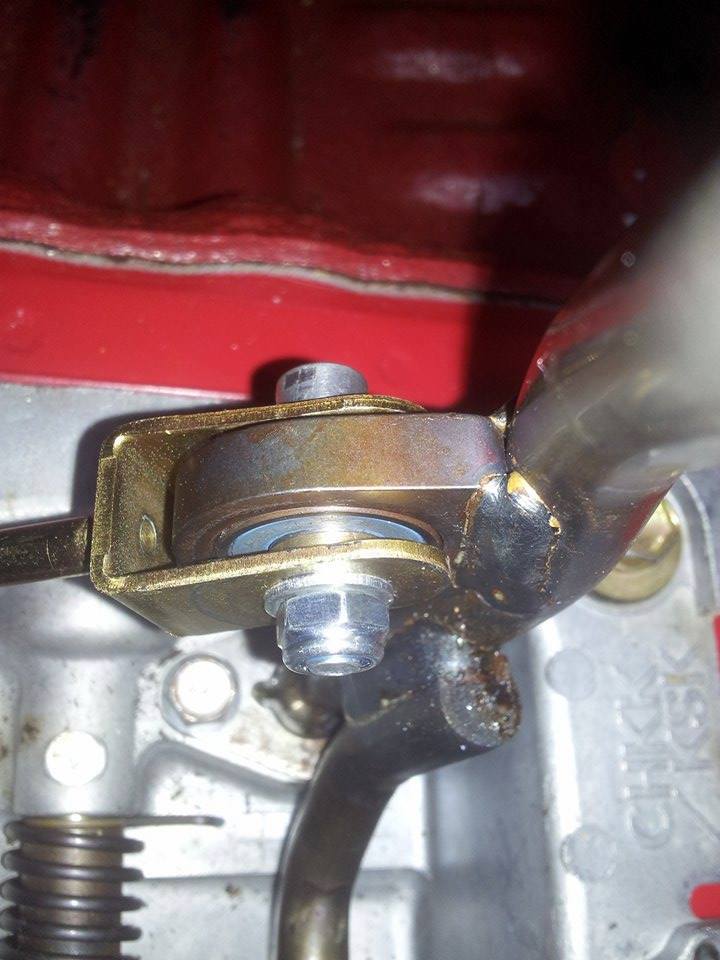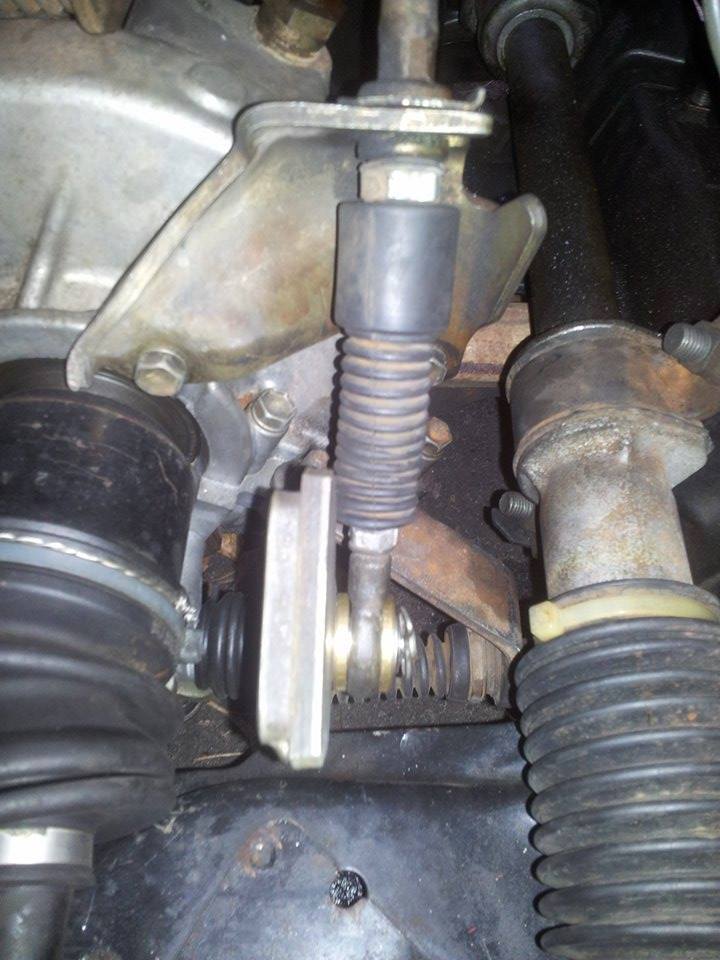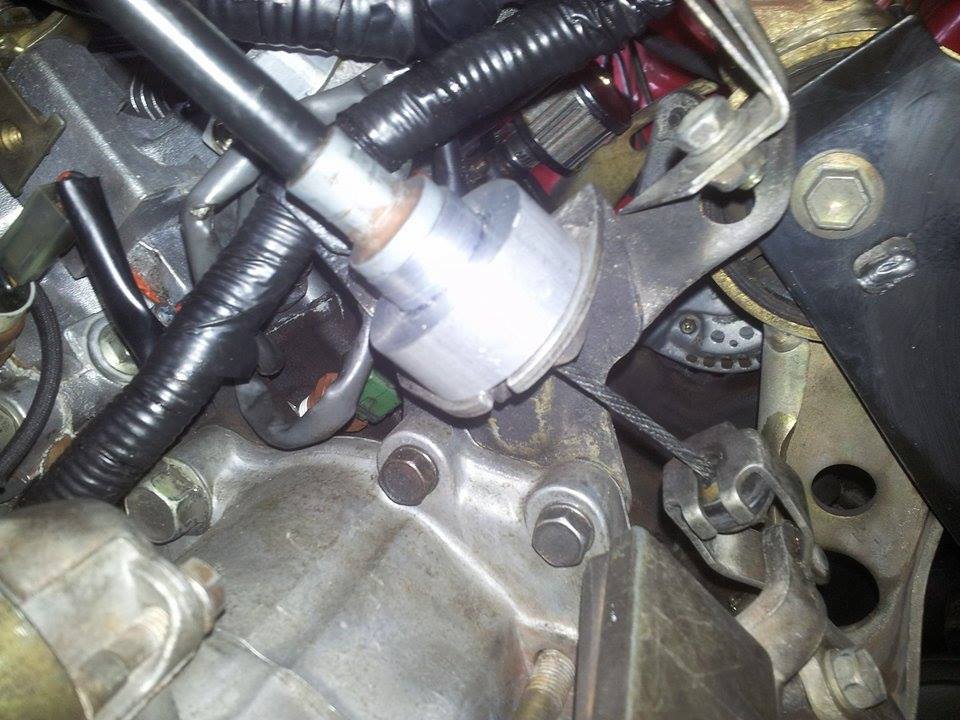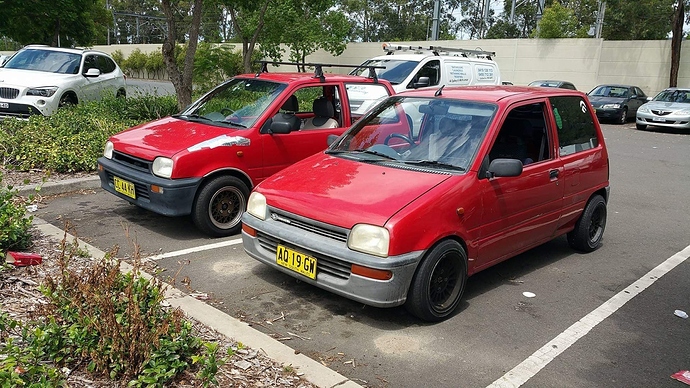Well I really have no idea where we left off so its just going to pick up from the photo folder I have in a disjointed order… so we’ll have to skip back to the AMR500 supercharger before dwelving back to the turbo… confusing eh.
Here is a pic showing the injector boss made into the side of the intake manifold. It so versatile in that if you ever need to, you can turn it on or off. Currently shown is a Sirion EJDE factory injector and that works for most boosted applications as it gives sufficient fuel. Of course you have to rescale the MAP sensor to adjust the fueling for primary(batched) injectors too.
This is just the initial photo when I ran a larger supercharger pulley which made around 8psi boost. It was just on the limit of not need an intercooler and I was able to duct it straight into the intake giving a super responsive set up. The natural downside is the that timing had to be conservative due to the intake temperature being higher. I actually ran with the direct route pipe for about 6 months and it was a blast. The reason it was shaped like so was that it sat inside the stock air box giving a it a more stealth… yeah right… appeal but also a more sedate factory look; you can find a picture of the bay earlier in this blog.
The AMR500 itself comes with a multi-ribbed pulley and I opted to change them out to a V-cog belt. While most is thinking that this is a downgrade, I never once experienced any belt slip. Shown are two smaller V-cog pulleys next to the original one. The two V-cogs are just off various alternators found in the daihatsu family of Miras. The modification involves opening up the diameter to clear the bolt and also adding a slot in for the key in the supercharger drive bolt. Now, you’ll see that there is a smaller and larger pulley… for now, lets call the smaller one 8psi and the larger 12psi. I’m going to let you figure out which is which and what size diameter they are. Cant recipe everything but with a bit of simple research, its no secret.
Foreword on the next part here. I have a personal despise of seeing brand new shiny photos of products, especially when people post them online flaunting and boasting what they have bought. Yes, I am a built not bought type of person who really prides the fabrication, design and art of building and crafting a car. One who just bolts on parts to make something is no master and will never understand how to fully bring out the most in something without trying to pioneer a solution from first hand. With the said, and itll seem hypocritical now, sometimes we have no choice but to buy or acquire parts because its not feasible to create yourself whether it be by skill, quality or purely time.
This leads to this section, which is one of the most important sections in terms of supporting mods. I always have the mentality to bullet proof the support mods such as braking, suspension and cooling before going power mods. Sadly, we see the opposite approach in most budget builds. In this case, there was no choice but to invest in some parts that is way out of my realm to fabricate. No shame this time around because I felt like the parts were chosen with a strategic reasoning.
The first needy part was a better clutch. You up the power and factory components which are not designed for it may soon give up. I found this out quickly as soon as I changed to the ‘12psi’ pulley and it just slipped the clutch at an instant. Sure, I could have changed back to the 8psi one but it would been inevitable as I could foresee it to slip regardless when it got tuned more aggressively, especially at low RPM. To give you an idea, the AMR500 can make 10psi static revving!
Here is the double clutch cover. At the time this was the most recommended item to begin with. Somewhat regrettably, this was not the best solution in the long term. I’ll get back to this later…
I went all out and bit the bullet for the best clutch disc the malaysians had to offer. This cost a few pennys but you can see by the solid construct and surface area and type of material, it would hold anything out little Dai’s could ever throw at it. The manufacturer rated this to over 350hp which is what they run in their record setting daihatsu’s over in Malaysia. Again, I hate being boastful but I opted for this because I anticipated intense torque from low down RPM and I couldnt affort the clutch to slip or all the effort would be in vain. This ensures that and to this date, (2 years later) it was money well spent.
Now this is where the blog gets confusing because Im going to transition back to the turbo build… sort of. It was actually a prelude as to why I converted to a turbocharger. I previously shown the direct route piping of the supercharger to the intake but with to allow more timing, one must first cool the compressed air charge coming out of the blower.
This lead to the the purchase of two other supporting items from ebay. A smaller bar and plate intercooler and a bigger aluminium radiator to keep coolant under control for more consistent performance. The radiator is the 40mm thick version and the intercooler is a 300x160 bar and plate with 2.25" ends. I had a spare 12" SPAL fan which I is not shown but that saves a lot of weight.
Somewhat off topic but I got one of these adjustable cam gears to also experiment with. More detail on this later.
Another important item is suspension (and above that, handling). These are zerone550 series custom valved with 7kg springs front and rear. It was a tricky decision picking such a high spring rate for the front but Its definitely needed to combat the lurching and squatting after adding extra power. To put it in perspective, the supercharger at 8psi doubled the factory power… The suspension naturally transformed the way the car handled.
A bit of a distance shot but you can see how it sits. These are in combination with 13x5.5(offset unknown) cheviot hotwire(?) wheels. I chose to run 165/70/13 strategically to get a taller ratio from the 5 speed box and it also suits the suspension better. The factory rolling diameter with 5-speed gearbox is simply too short for what we’re trying to do here. The thicker tire-wall ratio and 7kg springs still made for a pretty harsh ride but is acceptable for a ‘performance’ compromise.
Well, again I didnt mean to talk about all the products we could source and slap together as I meant for this to be more of a fabrication sort of blog but anywho, its is an essential part of the support mods towards the build.
Have to leave it there for now and heres a bonus photo of my red fleet. People have joked that I should start a school formal or tour guide service… ha! hmm well actually…
